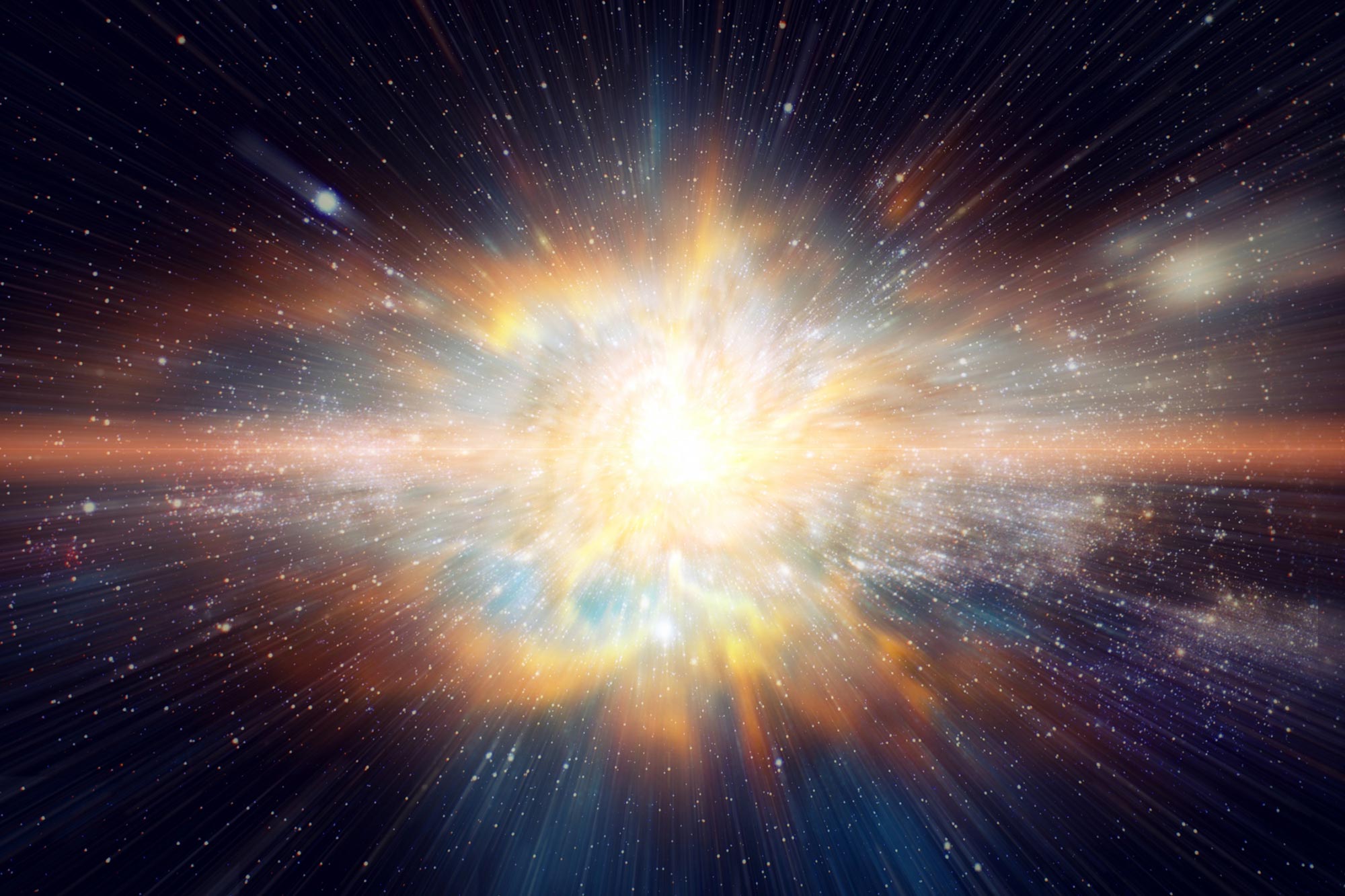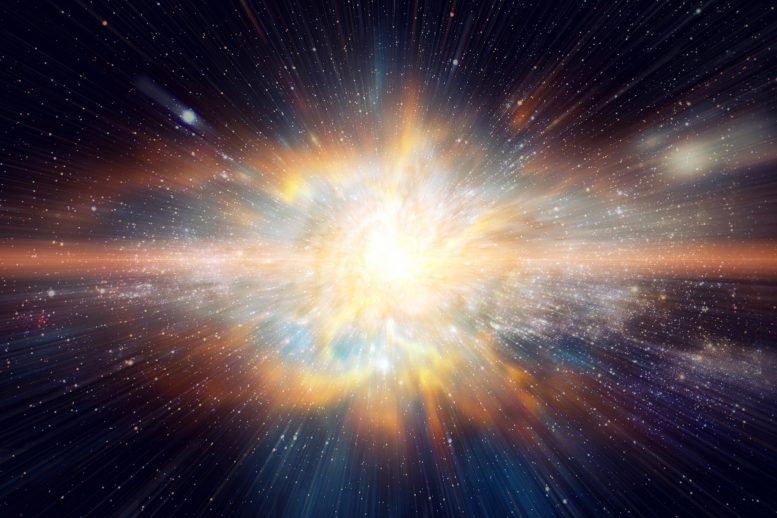

Researchers are using simulations and data from the South Pole Telescope to detect the faint kSZ effect, a key to understanding the Epoch of Reionization, when the first stars ionized the universe.
Imagine taking a journey back to the very early days of the universe, specifically, the start of the Epoch of Reionization (EoR). That’s when the first stars and galaxies formed, and their energy separated the protons and electrons of the dense, dark primordial hydrogen gas that comprised the universe, producing bubbles of ionized gas.
Your cosmic voyage would reveal many such bubbles in the darkness, and they would grow and coalesce, ionizing all the hydrogen in the universe, lighting up the darkness, and setting the stage for the evolution of galaxies as we know them today.
Unfortunately, scientists can’t create time machines that take us back to the EoR. But they can collect terabytes of data and create simulations to gain insights into the early universe and a process that’s key to understanding the formation and evolution of galaxies.
“These first stars have a lot of energy and when their ultraviolet protons interact with neutral hydrogen atoms, they eject an electron from the atom, and that’s basically how the universe became reionized,” said Srinivasan Raghunathan, Ph.D., a postdoctoral fellow at the Center for AstroPhysical Surveys (CAPS), at the National Center for Supercomputing Applications (NCSA) at the University of Illinois, Urbana-Champaign.
Those free electrons moving through the early universe interact with the cosmic microwave background (CMB) – the leftover radiation from the Big Bang – giving a boost to the energy and brightness of the CMB, Raghunathan explained. That energy boost gives rise to what is called the kinetic Sunyaev-Zel’dovichn (kSZ) effect, a faint signal from the early universe that allows cosmologists to peer back in time to understand the processes involved in the EoR as well as when it started and how long it lasted.
Detecting the kSZ Effect
Raghunathan led a multi-institutional research team that aimed to detect the kSZ effect from CMB temperature maps using data obtained from the South Pole Telescope and the SPIRE instrument onboard the Herschel Space Observatory. The results of their work were recently published in Physical Review Letters, a major journal of physics and cosmology research. The research is one of the ongoing research efforts of a South Pole Telescope collaboration that involves about 100 researchers from more than 20 organizations worldwide.
“Looking for this signal is crucial because it’s a way that we can understand how this whole process happened,” said Raghunathan. “But the signal is extremely faint. Because it’s the early universe, it’s buried below so many other things in the data, including the cosmic microwave background itself.”
The team took data from the South Pole Telescope – measured in the frequencies of 90, 150, and 220 GHz in the submillimeter band – and performed a four-point, or trispectrum function, which measures correlations between four points in a system, to look for the non-Gaussian, or patchy, nature of the kSZ effect. That effect is expected to give a slight boost in energy (measured in temperature) to the CMB as galaxies began to form and reionization happened across the universe.
“We know there are many galaxies in patches or bubbles and that there should be some kind of correlation between these patches,” explained Raghunathan. “We are trying to guess how our universe would have been realized based on these correlations.”
Simulating the Early Universe
To assist in their hunt for the kSZ signal, the researchers developed high-resolution computer simulations of the universe and using them as a template, worked to filter out extraneous signals and the effects of gravitational lensing (the curve in the path of light as it travels around galaxies and other matter in the universe) from the CMB. They performed hundreds of these simulations that mimic their data using the Illinois Campus Cluster at NCSA.
“We have several terabytes of data, and we want to validate what we are measuring. So, we build simulations of the early universe. Lots and lots of simulations,” says Srinivasan Raghunathan, postdoctoral fellow, NCSA Center for AstroPhysical Surveys.
The simulations are an attempt to “see” how those early signals in the universe interact with each other and how they make their way into the three frequencies being measured, Raghunathon explained.
“We’re not looking at a particular galaxy and saying that’s our measurement,” he said. “What we are trying to do here is come up with a statistical model of the Epoch of Reionization. We know there are many galaxies, or many, many patches, caught up in the bulk flow and hence there should be some kind of correlation between those patches giving rise to the kSZ signal. We are now trying to guess how our universe would have reionized based on these correlations.”
Progress in Understanding Reionization
Although the kSZ effect from the EoR should give a small boost, or glow, to the CMB, the research team has not yet detected the signal in its data, a result that is nonetheless a significant step forward in probing the early universe and understanding the EoR, according to Raghunathan.
“The fact that we didn’t detect the signal tells us that the signal can’t be above a certain amplitude,” he said. “The signal has to be below this particular expectation, and just based on that, we can rule out a lot of models of reionization, like early and slow models, where they are predicting a kSZ signal that could be enormous.”
Setting an upper limit on when the EoR likely ended gives scientists a parameter to work from as they continue to investigate the early universe and the EoR. As new, high-resolution, low-noise datasets covering larger spans of the universe become available and scientists conduct additional multi-frequency analyses, they will piece together the mystery of the epoch of reionization, including when it started, whether it happened suddenly or slowly, and when it ended.
“The ongoing South Pole Telescope survey will continue for a few more years, which significantly reduces the noise in the data, making it better and better,” said Raghunathan. The next-generation ground-based cosmic microwave background experiment called CMB-S4, which will collect survey data from telescopes at the South Pole and in Chile, will mean even more available data covering a wider swath of the sky. And that means the need for more data processing and analysis techniques to search for the kSZ signal and begin to understand the epoch when stars literally lit up the skies. This analysis is a key first step towards such future analyses, he said.
“In the near future, we are hoping to detect this signal. We know it’s there and that reionization happened. Now we want to know why and how the entire process happened.”
Reference: “First Constraints on the Epoch of Reionization Using the Non-Gaussianity of the Kinematic Sunyaev-Zel’dovich Effect from the South Pole Telescope and Herschel-SPIRE Observations” by 19 September 2024, Physical Review Letters.
DOI: 10.1103/PhysRevLett.133.121004